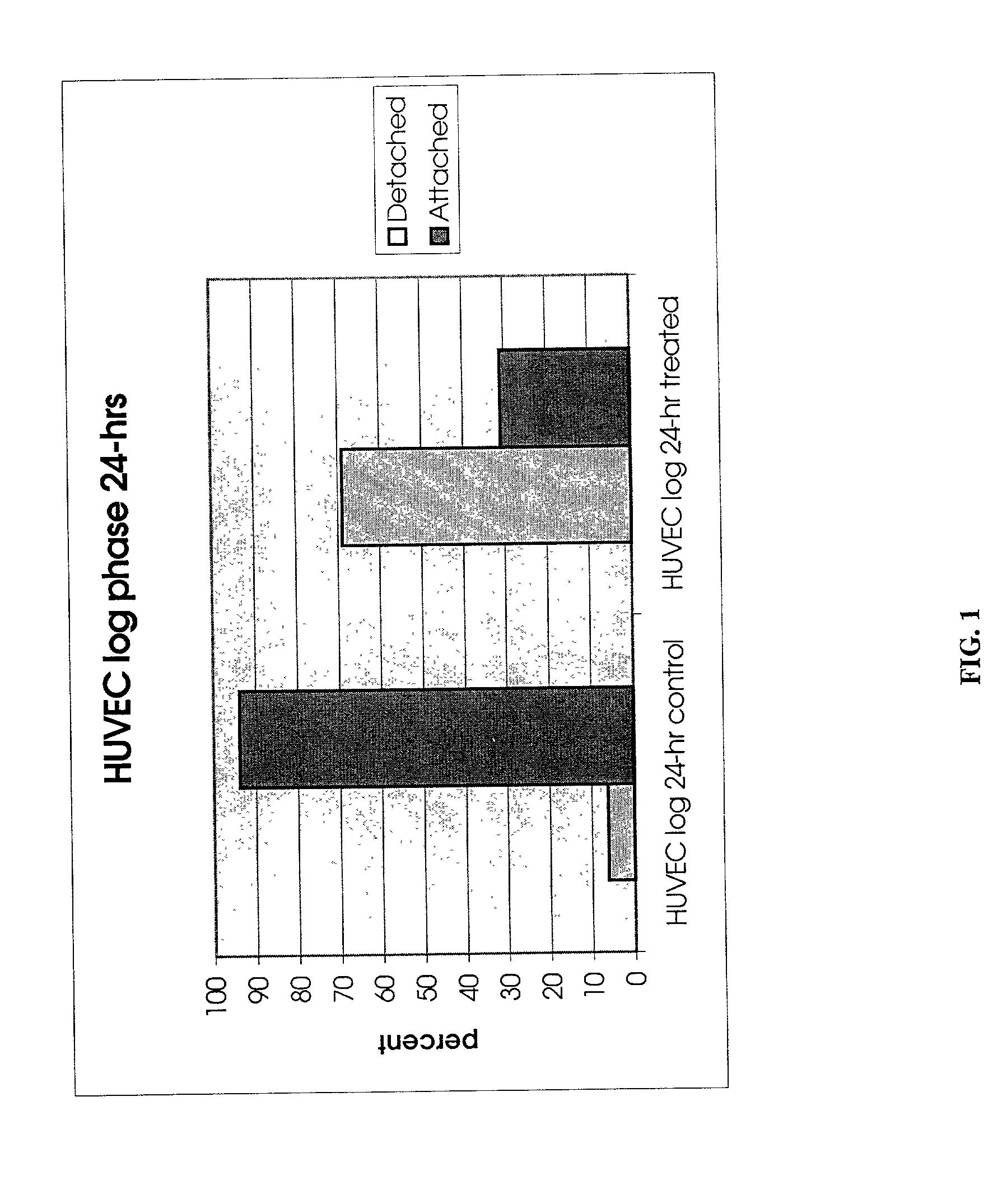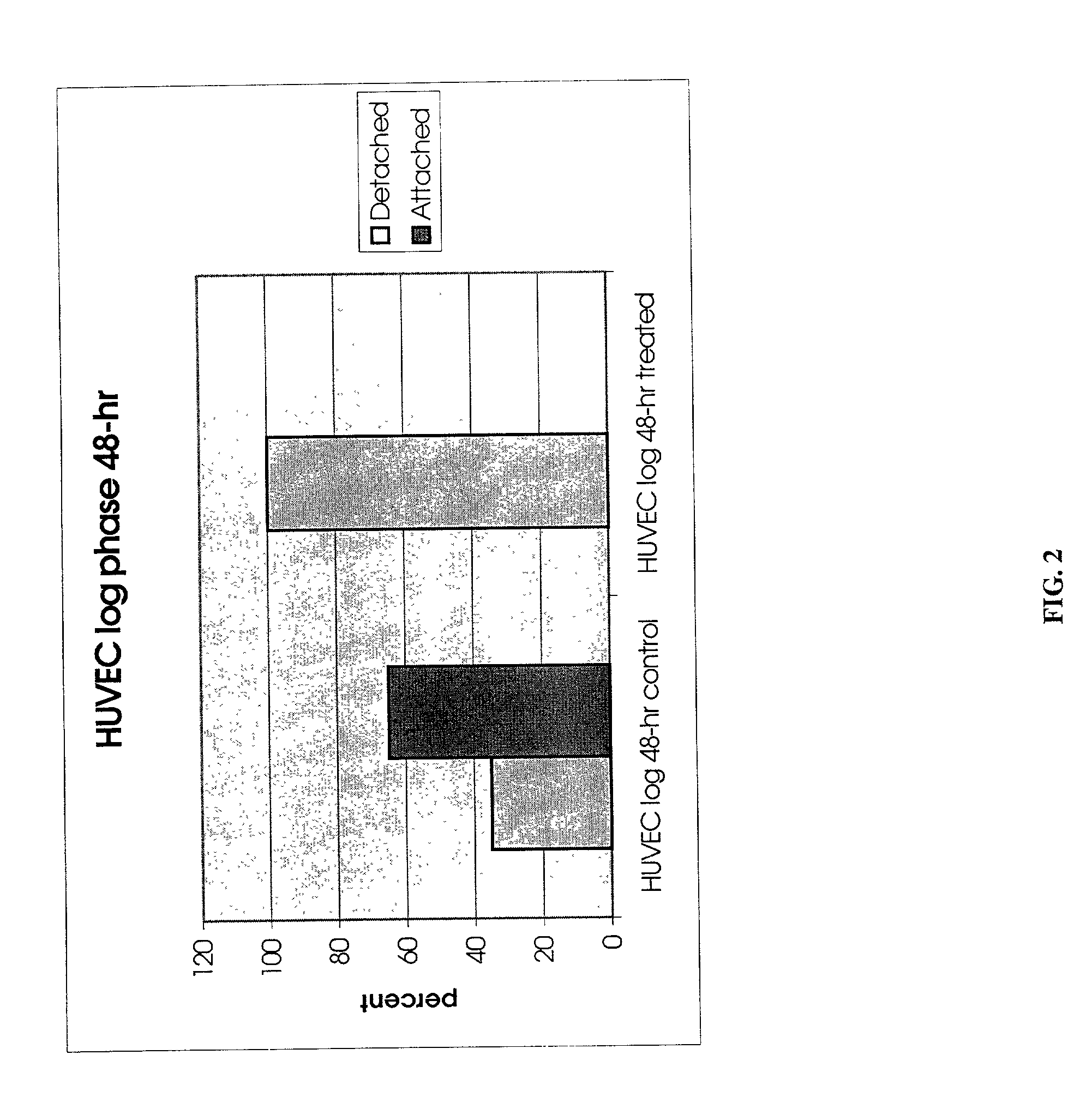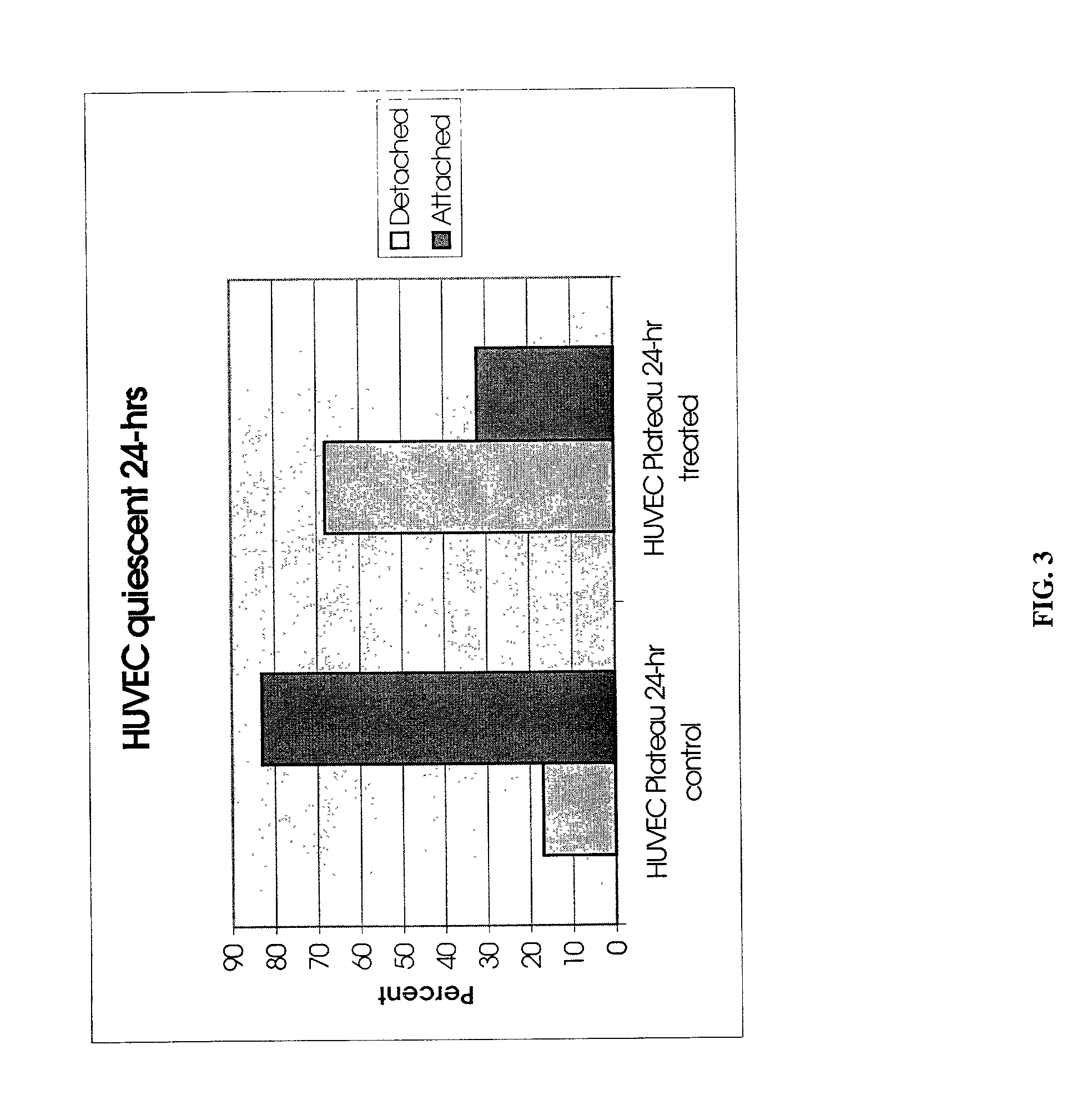Methods and compositions for angioproliferative disorder treatment
a technology of angioproliferative disorder and composition, which is applied in the direction of gene therapy, peptide/protein ingredients, genetic material ingredients, etc., can solve the problems of rapid death of individuals, significant damage, and abnormal rapid proliferation of blood vessels
- Summary
- Abstract
- Description
- Claims
- Application Information
AI Technical Summary
Benefits of technology
Problems solved by technology
Method used
Image
Examples
example 2
Method of Demonstrating Detachment Associated with PrtP Protease from P. gingivalis
[0064] To demonstrate that the protease PrtP isolated from P. gingivalis is responsible for the detachment observed in Example 1, three sample were set up and applied to A549 lung carcinoma cells. Single P. gingivalis protein, the PrtP protease, was expressed in Bacteroides fragilis, a species related to P. gingivalis, but which does not express PrtP, for the purpose of further chromatographic purification. Therefore, treatment of carcinoma cells was performed with extract of B. fragilis containing PrtP and compared to the same treatment with a wild-type B. fragilis host. The difference between the treatments was limited in this way to the presence / absence of P. gingivalis PrtP protease only. The strains were grown in BHIS broth (per liter, 37 g Brain Heart Infusion (Difco), 1 g L-Cysteine (Sigma), 5.times.10.sup.-4% hemin, 0.2% NaHCO.sub.3 in an anaerobic chamber with an atmosphere of 5% CO.sub.2, 10...
example 3
Migration Inhibition Assay
[0065] To demonstrate that P. gingivalis extract exerts anti-angiogenic effects, as opposed to general inhibition of cell proliferation, the following assay was performed. P. gingivalis were produced and homogenized to obtain an extract as described in Example 1.. At 0.4-mg total protein / ml, human vascular endothelial cell migration in a standard in vitro assay known in the art to reflect angiostatic and anti-tumor activity, was reduced by 45%, (mean value of 2 experiments) (see FIG. 10). In addition, at 48 hours, detachment of 85% of the cells was observed (not shown). Since total cell protein was used, where the fraction of the active ingredient is small, this experiment demonstrates that the angiostatic activity of the P. gingivalis proteinase is high.
example 4
Identification of Epithelial Cell Ligands of Hemagglutinin A
[0066] In order to determine if HagA interacts directly with host cell components, a functionally active fragment of HagA was produced in E. coli using the E. coli expression vector, pET19b (Novagen). In this system, purification was achieved by fusing a histidine tag to the HagA fragment and by affinity purification of the fusion protein on a Ni.sup.2+ column. For this, oligonucleotides were designed flanking 2 HArep sequences to include the active site of hemagglutination as disclosed in U.S. Pat. No. 5,824,791 (herein incorporated by reference) and to include restriction sites for ligation of the fragment into the expression vector, pET19b. The 3 kb PCR product was first cloned into pT7Blue vector (Novagen), digested with NdeI and XhoI, and the coding sequence was directionally subcloned into pET19b, which had been digested with the same enzymes and CIP-treated. Using PCR with a mixed pair of primers T7 (from vector) and...
PUM
| Property | Measurement | Unit |
|---|---|---|
| pH | aaaaa | aaaaa |
| volume | aaaaa | aaaaa |
| time | aaaaa | aaaaa |
Abstract
Description
Claims
Application Information
 Login to View More
Login to View More - R&D
- Intellectual Property
- Life Sciences
- Materials
- Tech Scout
- Unparalleled Data Quality
- Higher Quality Content
- 60% Fewer Hallucinations
Browse by: Latest US Patents, China's latest patents, Technical Efficacy Thesaurus, Application Domain, Technology Topic, Popular Technical Reports.
© 2025 PatSnap. All rights reserved.Legal|Privacy policy|Modern Slavery Act Transparency Statement|Sitemap|About US| Contact US: help@patsnap.com



